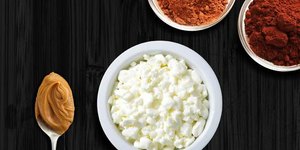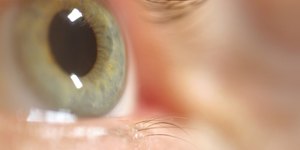5 Things You Need to Know About Thick Blood Disease
| ByUnderstand the Term
"Thick blood" is known in the medical community as hypercoagulability. As its name indicates, this condition causes blood to clot much more easily than usual because it is thicker and stickier. Normally, a combination of proteins within blood prevent it from clotting in the vessels. When these proteins are absent, the result is blood that tends to stick to the walls of vessels, coating them with a substance called fibrin. Fibrin buildup eventually leads to clots within blood vessels.
When Thick Blood Presents a Problem
Thick blood is problematic if there are symptoms that are not being treated. Some people with hypercoagulability do not show signs or symptoms. When blood is thickening within the body, however, it has a difficult time circulating and carrying necessities, such as oxygen, nutrients and hormones throughout the body. Because the body is not getting these things from the blood, hypercoagulability ultimately leads to nutritional deficiencies, hormonal deficiencies and possibly hypoxia or lack of oxygen. In addition to the deficiencies, thick blood requires that the heart work harder to pump blood through the body.
You Might Also Like
Causes of Thick Blood
Hypercoagulability is either inherited or acquired. There are three main factors that bring about acquisition of hypercoagulability: abnormalities in the blood vessel wall, abnormalities in the components of blood and abnormalities in blood flow. The three most common situations in which hypercoagulation is fostered are stasis, turbulence and trauma. Stasis means blood has been pooling in one place (in the legs, after surgery for example), turbulence is associated with aneurysms and trauma can be either injury or a tumor that invades the blood vessel. When there is no environmental cause, these abnormalities often result from high blood pressure, liver disease, kidney disease and chemotherapy.
- Sponsored Links
- Blood Pressure Guide What Causes High Blood Pressure? Discover The Online Guide Now!alphega-pharmacy.co.uk/
- Blood Pressure Guide
Symptoms of Thick Blood
If you have hypercoagulability, you may experience blood that appears thickened when drawn, slow bleeding when you are cut, nutritional and hormonal deficiencies that appear throughout the body, miscarriages and one or more chronic conditions, such as Chronic Fatigue Syndrome, candida or Irritable Bowel Syndrome.
Treatment of Thick Blood
Most of the time, hypercoagulability is asymptomatic and does not require any treatment. The biggest risks associated with hypercoagulability are those associated with any blood clot traveling through the circulatory system. A clot can become lodged in an artery, vein or capillary and cut off the blood normally supplied to that part of the body. To prevent this from happening, people who have the disease and do not normally experience any symptoms may only require treatment when they are going to have surgery. For those who do experience a blood clot in the wrong place, they must first receive an IV anti-coagulant like Heparin, and then go on to a maintenance dose of an oral anti-coagulant like warfarin sodium.
Sponsored Links
-
Take the Free Chakra Test to FindOut Which of Your Chakras Are Weakchakrahealing.com/3-Min-Chakra-Test




















No comments:
Post a Comment